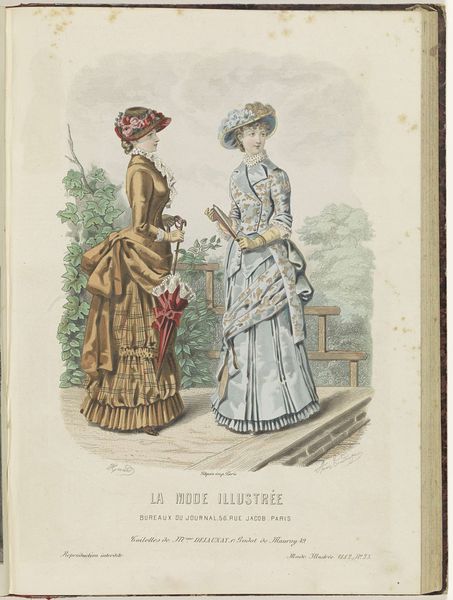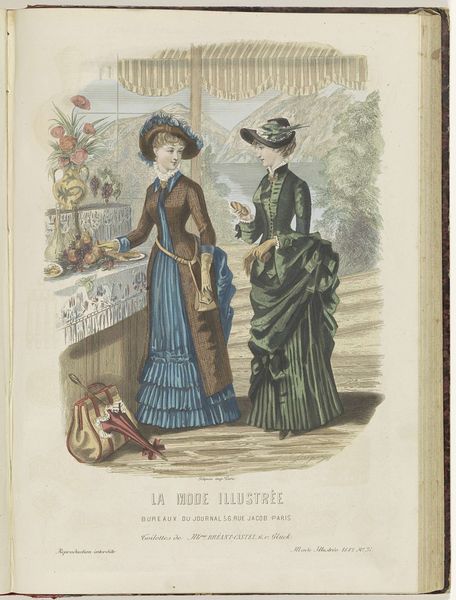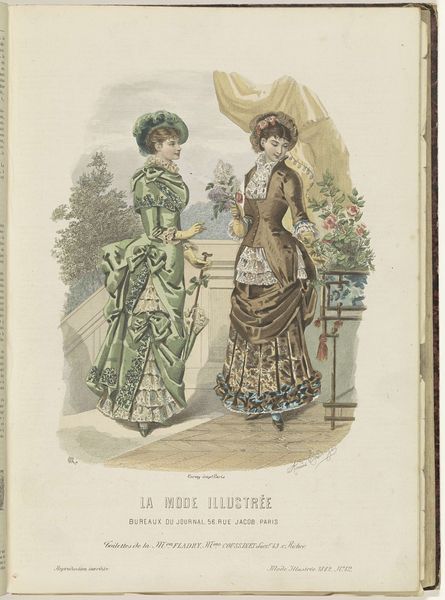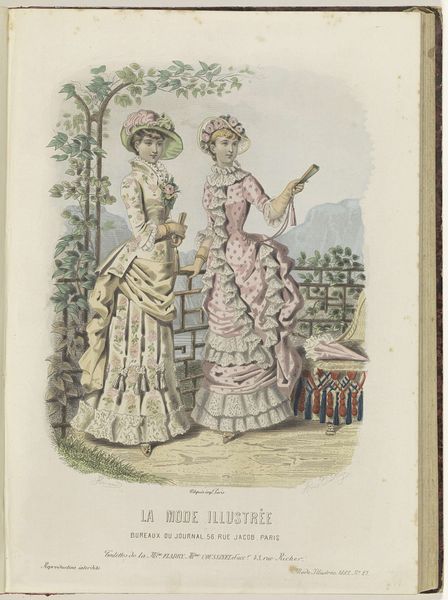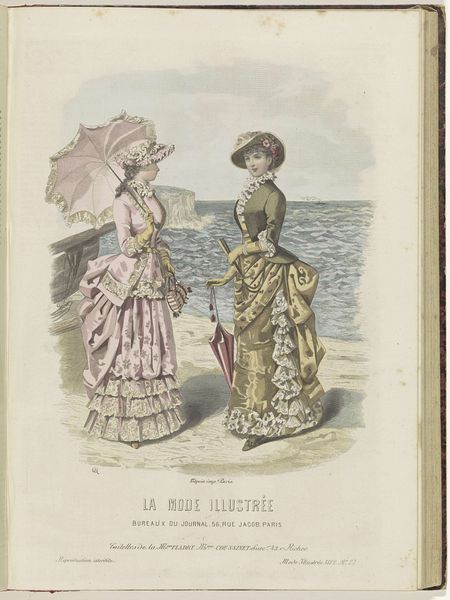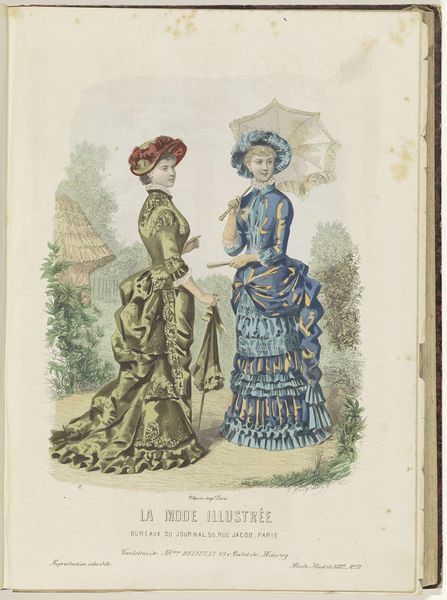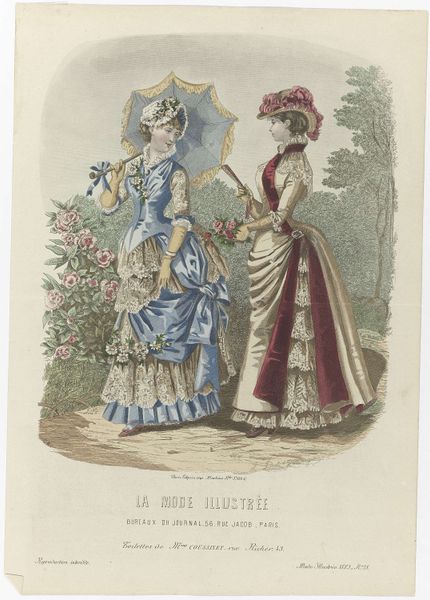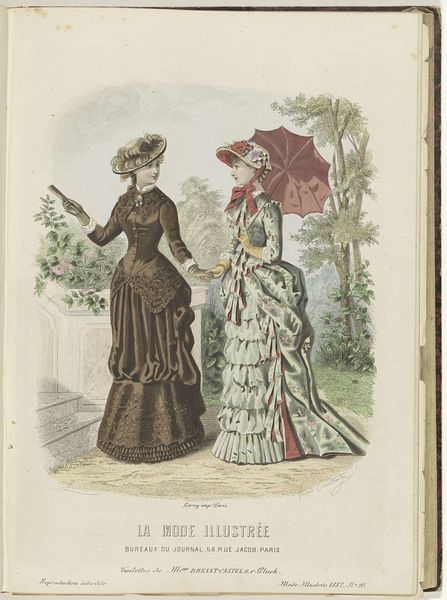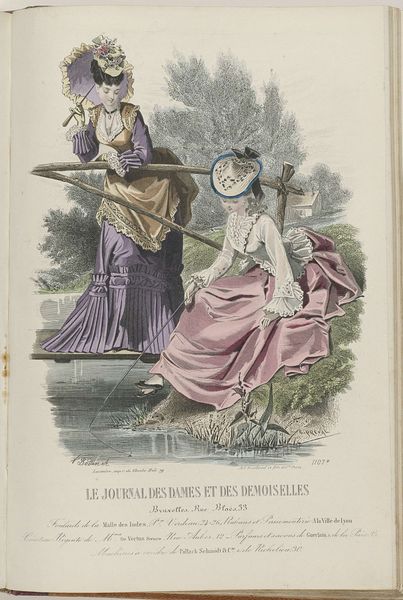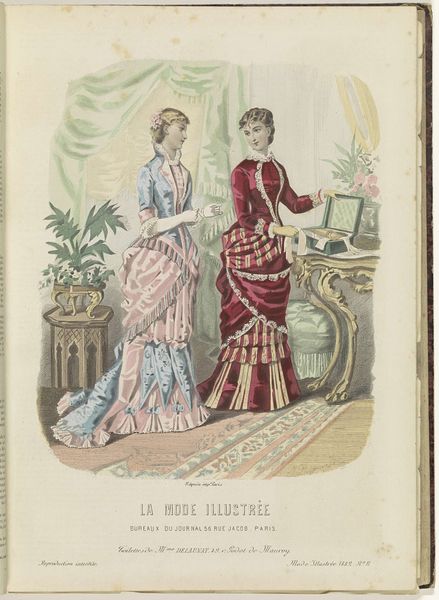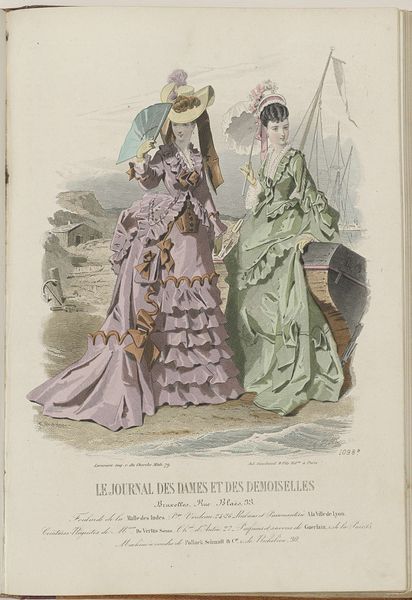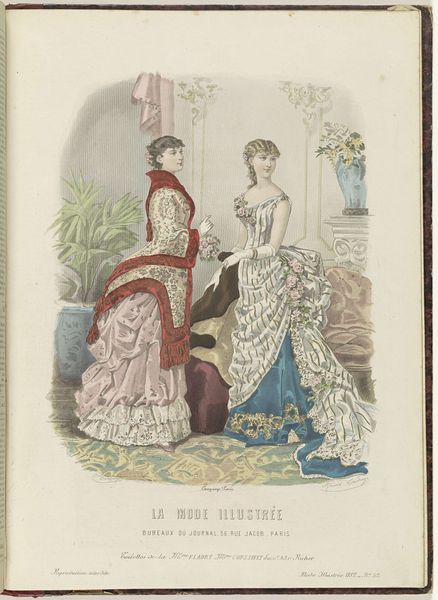
Dimensions: height mm, width mm, thickness mm
Copyright: Rijks Museum: Open Domain
Curator: Take a moment to observe "La Mode Illustrée, Journal de la Famille," a print from 1882 originating in Paris and now residing here at the Rijksmuseum. Made with a combination of mixed-media including lithograph and etching. It features two women and a child standing on a rustic bridge. What are your initial impressions? Editor: A wistful sort of longing hangs in the air. The figures, elegantly dressed, feel as though they are embodying certain societal ideals. Their clothing creates elaborate forms that command your attention. Are these symbols of a bygone era still alive today, maybe reimagined in contemporary terms? Curator: Absolutely. Fashion plates like these, appearing in journals such as "La Mode Illustrée," weren't merely about aesthetics. They reinforced social hierarchies and constructed ideals of femininity. Notice the distinct styles. Each fabric and cut communicated messages about status and aspirational identity for the bourgeois family. Editor: Yes, it's fascinating how the visual vocabulary functions almost as a societal emblem. The parasols, for example, and even the way each woman poses – there’s a symbolic performance underway, isn't there? Almost an invitation to perform certain versions of "woman" through an elaborate play of garments. It makes one consider the parasol, almost like a sacred scepter shielding one from worldly elements. What does it symbolize, really? And do these fashion publications inadvertently show an obsession with masking and unveiling? Curator: Fashion publications offered an outlet and reinforced this sense of collective belonging. Here the print provided templates for both reflecting social values and projecting individuality. Fashion offered both a mirror and a shield in response to a society experiencing industrialization. Consider the rapid urbanization of Paris at that time, and the rising power of the middle class. It sought visible marks of distinction. Editor: That makes a good point. Viewing their images now, over a century later, it is fascinating how powerful such subtle indicators become. Almost archetypes repeated across decades, and each repetition carries memory. There is that yearning present for lost symbols and times past. Curator: Exactly. So, when we observe "La Mode Illustrée," it’s about interrogating that interplay of symbols, context, and power within a specific cultural frame and across generations. Editor: Very true. What a reminder that images can operate not merely as representation but also as potent vehicles of societal aspirations, hopes and memories!
Comments
No comments
Be the first to comment and join the conversation on the ultimate creative platform.
